Considered a cultural icon of Russia, a sleigh drawn by three horses abreast, the troika. The unusual aspect is that the three horses are next to each other, abreast, with the middle horse trotting and the outside horses cantering. At full speed, a troika can reach 45–50 km/hour – the fastest ride in the 17–19th centuries. It was first developed for speedy mail deliveries, but soon, they were used for travelling where the horses would be changed periodically at stages.
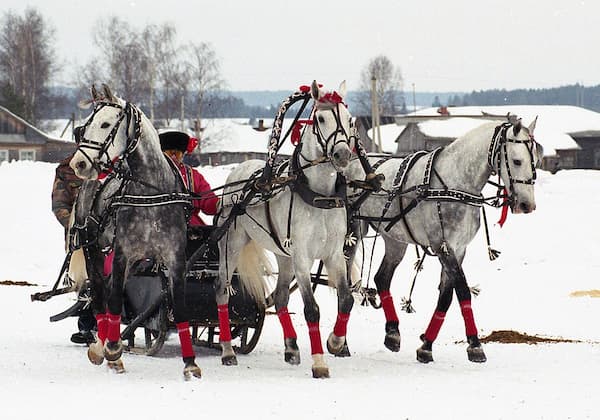
Modern day Troika, 2003
Composers took up the idea of the troika in their music. The most well-known troika music today is in Prokofiev’s Lieutentant Kijé. Prokofiev wrote his music to accompany the 1934 film comedy of the same name. In the film, two drunk soldiers take off in a troika, and one eventually falls out. We don’t need the movie to hear their wild ride in the music. It starts with a pompous opening, and then the bells set us off!
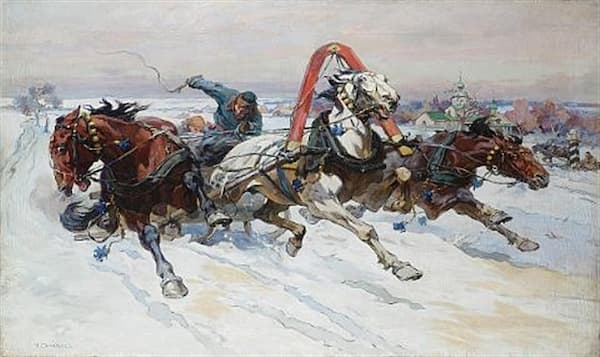
Nikolai Semyonovich Samokish: Speeding Troika, before 1905
Sergei Prokofiev: Lieutenant Kije Suite, Op. 60 – IV. Troika (Lille National Orchestra; Jean-Claude Casadesus, cond.)
Valery Gavrilin (1939–1999) is best known for his 1970 orchestral adaptation of the ballet Anuyta, and in its adaptation for 1 piano, 4 hands, much of the influence of his contemporaries, including Shostakovich and Stravinsky, can be heard. He also picks up on the accelerated speed of the troika!
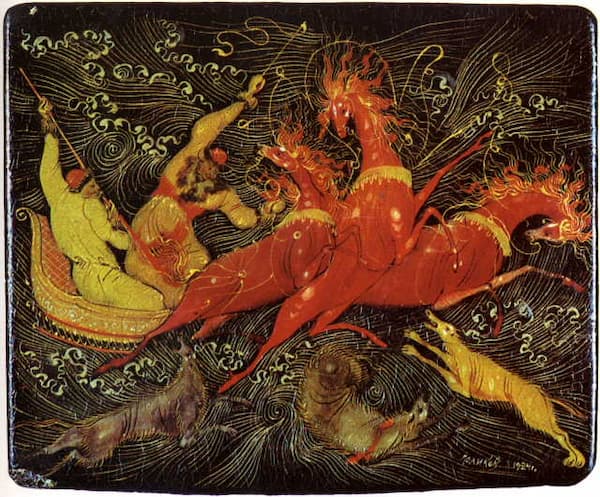
Ivan Ivanovich Golikov: Troika with wolves, shown on a cigarette case, 1924
Valery Aleksandrovich Gavrilin: Sketches for Piano 4 Hands (after Anyuta) – No. 1. Troika (Irina Shishkina and Maya Berdieva, 1 piano-4 hands)
The Russian Army Chorus song ‘Troika’ sets a text by Fyodor Nikolayevich Glinka about a lonely troika driver who just wants to be home with his beloved.
Traditional: Troika (arr. V. Agarkov) – Troika (Red Army Choir; Red Army Band; Victor Fedorov, cond.)
Sergei Orekhov (1935-1998) takes up the same song in his Troika Variations, and in his setting, Orekhov brings together a set of improvisatory melodies influenced by Russian gypsy music.
Sergei Orekhov: Troika Variations (Artyom Dervoed, guitar)
American composer William Perry is best known as a film composer, but in his role at the Museum of Modern Art, he oversaw showings of silent films and provided piano accompaniment for those films (which we know were never musically ‘silent’). He put together the music from many of these films in his Gemini Concerto, and the Moscow movement ‘depicts a sleigh drawn by three black horses carrying a young nobleman through a snowy landscape to the grand dacha of his beloved’. The music ends with a romantic theme, implying that the young lover’s trip wasn’t in vain. The movie was Tempest, 1928, starring John Barrymore.
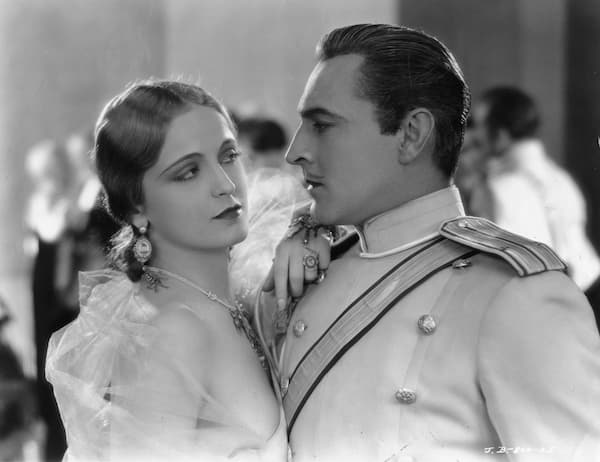
John Barrymore and Camilla Horn in Tempest, 1928
William Perry: Gemini Concerto – IV. Moscow: Twilight Troika and Romance (Ireland RTÉ National Symphony Orchestra; Paul Phillips, cond.)
A slower version of the troika appeared in Tchaikovsky’s 12-movement work, The Seasons. Representing November, Troika, does have the sleigh bells, but is more of a romantic sleigh ride than the hurried journeys we’ve heard in other situations.
Pyotr Ilyich Tchaikovsky: Les saisons (The Seasons), Op. 37a – XI. November: Troika (Takako Nishizaki, violin; Queensland Symphony Orchestra; Peter Breiner, cond.)
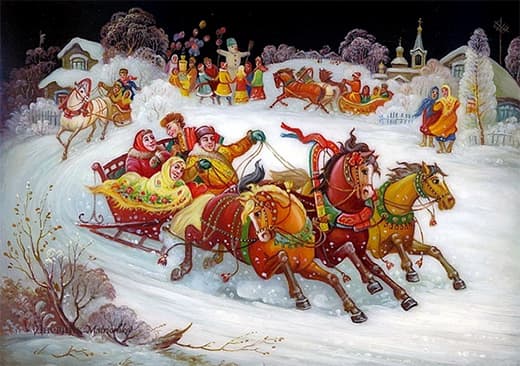
Troika ride
We’re more likely to take to our cars to get through the snowy landscape, but in the troika, it was a much more exciting ride!
For more of the best in classical music, sign up for our E-Newsletter

